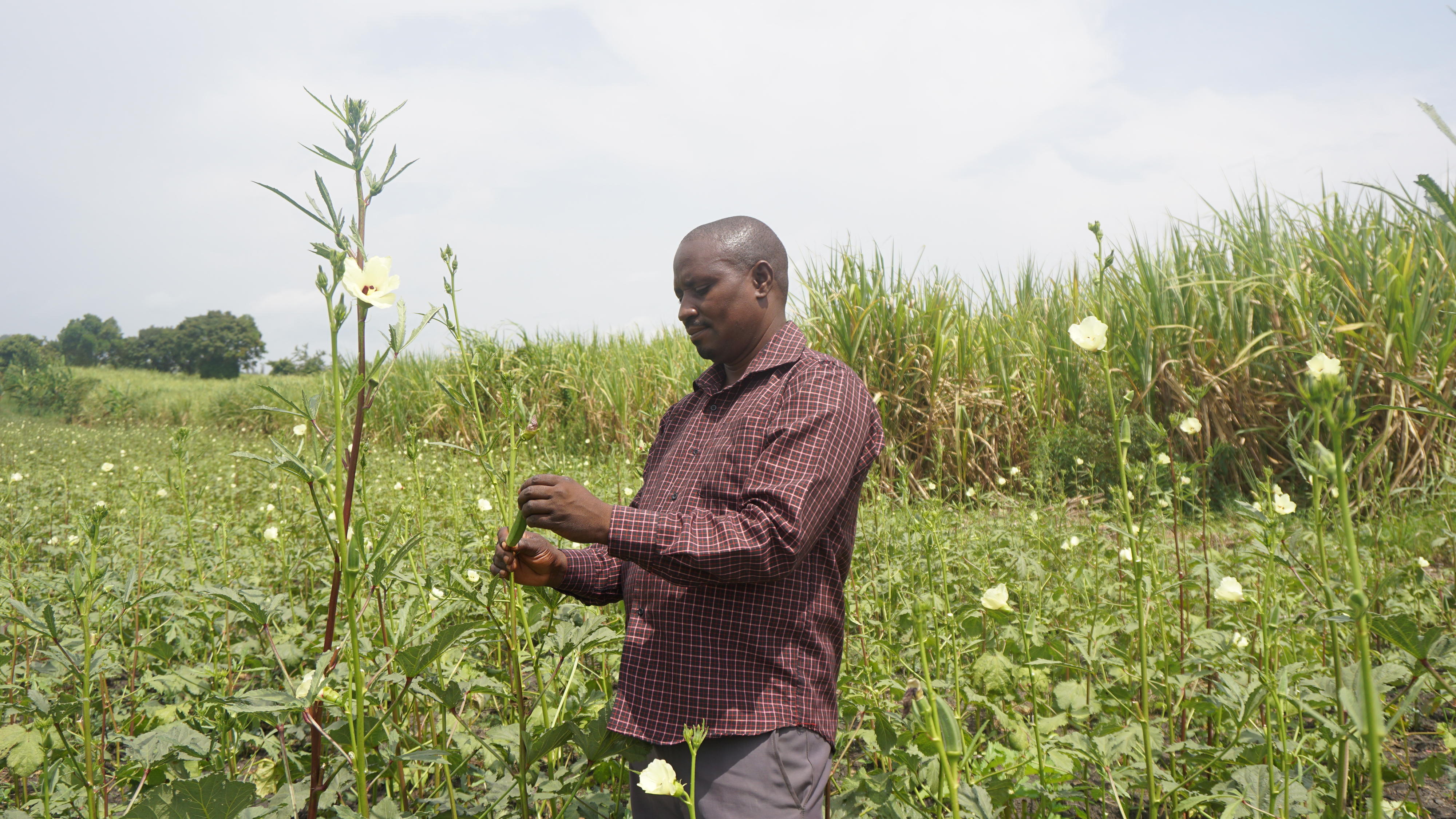
The best okra pods are only 2 to 4 inches long. PHOTO/FILE
Okra also known in its scientific name as Abelmoschus esculentus is an economically important vegetable crop grown in tropical and subtropical parts of the world including Uganda.
Okra sometimes referred to as lady’s finger is a native of the tropical parts of Africa.
It belongs to the Mallow family and is a relative of cotton and the tropical flowering hibiscus.
In Uganda most farmers grow it on small scale intercropped with other crops such as beans. However lately the demand for vegetable is growing due to its nutritious and health benefits.
Background
The researchers describe okra as a multipurpose crop due to its various uses of the fresh leaves, buds, flowers, pods, stems and seeds.
The statistics indicate that in 2021, world production of okra was 10.8 million tonnes, led by India with 60 percent of the total production, with Nigeria and Mali as secondary producers.
Okra farming
The plant is cultivated throughout the tropical and warm temperate regions of the world for its fibrous fruits or pods containing round, white seeds. It is among the most drought-tolerant vegetable species in the world and will tolerate soils with heavy clay and intermittent moisture, but frost can damage the pods.
In cultivation, the seeds are soaked overnight prior to planting to a depth of 1–2 centimetres.
The crop is well adapted to almost all the climatic areas and soil types in Uganda.
The most common planting system is by direct sowing. The seed is directly sown into beds and later thinned out where plants are too close.
The recommended spacing is 30 cm between rows and 10 cm between plants. The size of the bed is one by 40 metres, giving a population of 1,200 plants per bed.
Planting amounting to 65 percent of total plant population of 150,000 plants per hectare, can yield eight metric tonnes.
It prefers a soil temperature of at least 20 degrees Celsius for germination, which occurs between six days and three weeks.
As a tropical plant, it also requires a lot of sunlight and it should also be cultivated in soil that has a pH between 5.8 and 7, ideally on the acidic side. Seedlings require ample water. The seed pods rapidly become fibrous and woody and to be edible as a vegetable, it must be harvested when immature.
Varieties
There various Okra varieties grown in the entire world but in Uganda there are mainly two types of okra that are recommended for the export market and these include Pussa sawani 1 and Clemson spineless.
The other types such as Burgundy and Burmese are for home consumption and are commonly grown in northern Uganda.
Pests and diseases
Arthropod pests of okra include caterpillars, aphids, thrips, whitefly and mites among others.
Leaf-feeding caterpillar pests that attack okra include beet, southern and fall armyworm, cab bage looper, and corn earworm. Cabbage looper and corn earworm can also bore into pods. The most common disease is charcoal rot which can cause yield loss in the entire field.
Others are Fusarium wilt Fusarium oxysporum, Powdery mildew Oidium asteris-punicei, and Southern blight Sclerotium rolfsii as well as White mold Sclerotinia sclerotum.
Okra enation leaf curl virus and fruit borers are the major production constraints; they cause yield losses and lower quality of the produce.
Farmers are expected to plant resistant varieties and spray using recommended chemicals.
Management
When the plant has grown for two to one month, farmers are expected to eliminate weeds when the plants are young, then mulch heavily 4 to 8 inches to prevent more weeds. Side dress the plants with manure, or rich compost and apply a balanced liquid fertiliser monthly. Avoid too much nitrogen, which deters flowering and encourages leafy growth. When the seedlings are about 3 inches tall, thin the plants so that they are 18 to 24 inches apart.
Keep the plants well-watered throughout the summer months. One inch of water per week is ideal, but use more if you are in a hot, arid region.
Prune the tops of okra plants when they reach 5 to 6 feet tall. This will result in more side branches.
Harvesting
The first harvest will typically be ready about two months after planting. The pods grow so fast and ripen within a day, so you need to pick continually. Overripe okra is too tough to eat.
The best pods are only 2 to 4 inches long. This is when okra is at its softest and most digestible.
Okra usage and health benefits
Okra immature fruits are consumed as vegetables and can be used in salads, soups and stews, fresh or dried, fried or boiled.
It offers mucilaginous consistency after cooking. Often the extract obtained from the fruit is added to different recipes like stews and sauces to increase the consistency.

